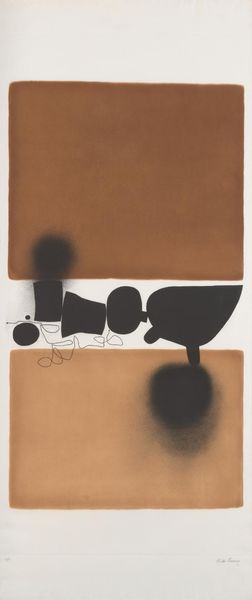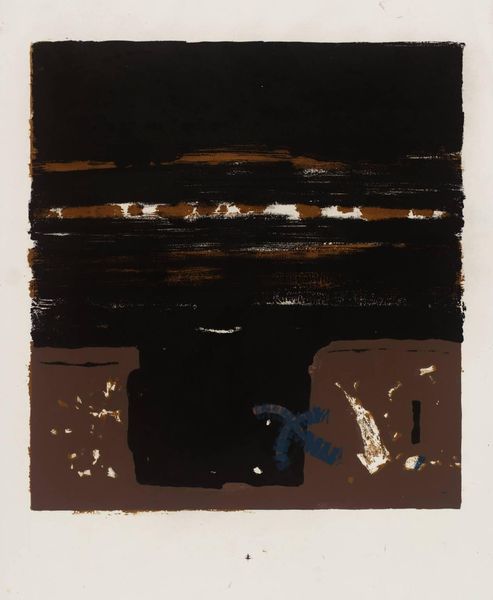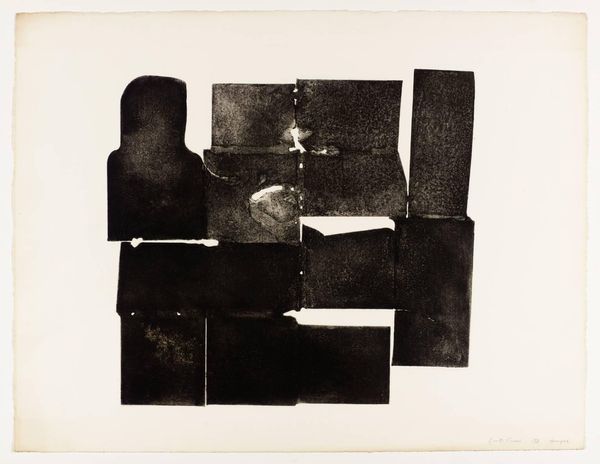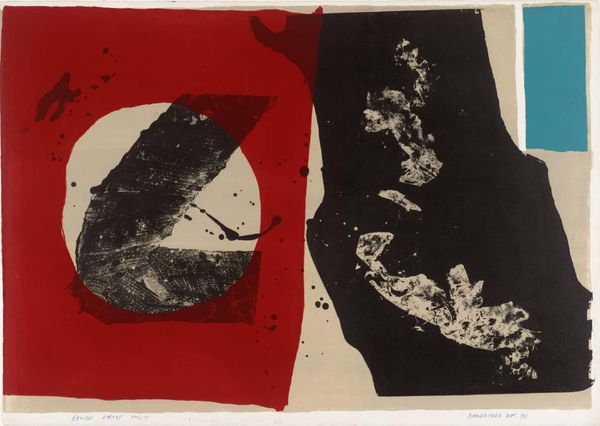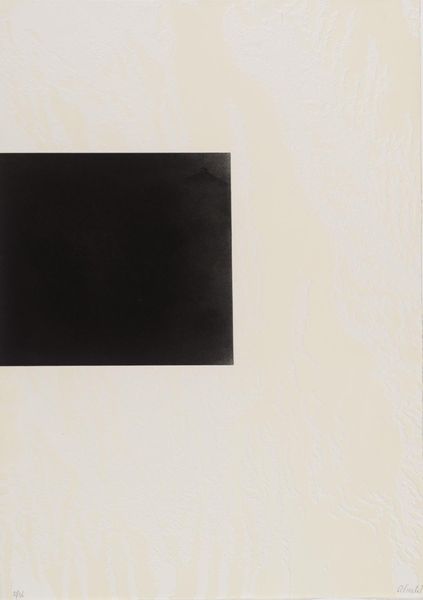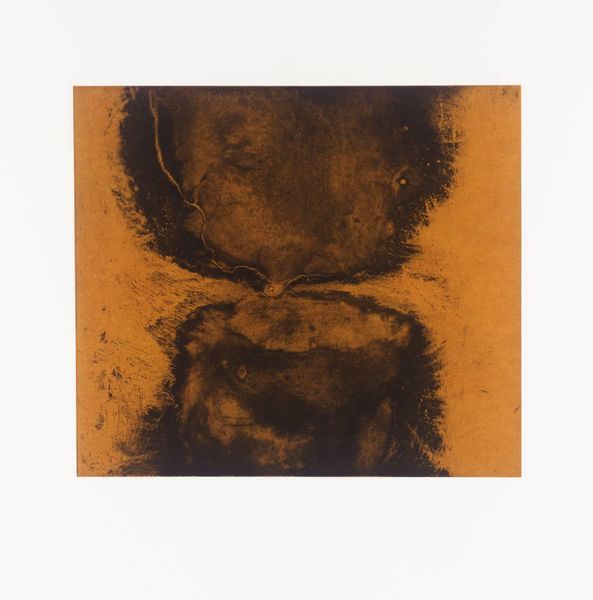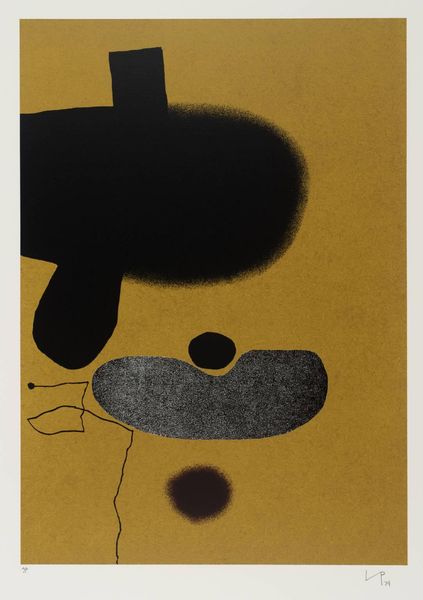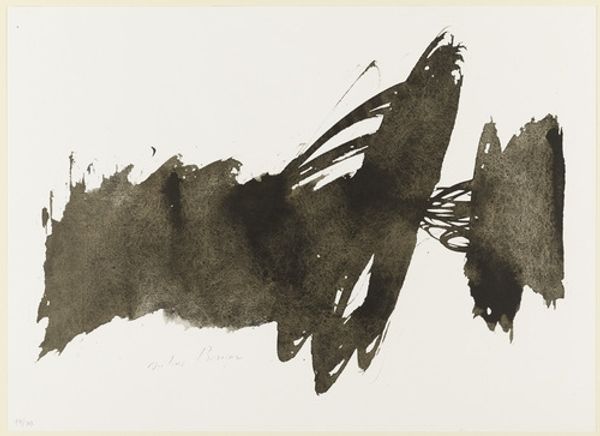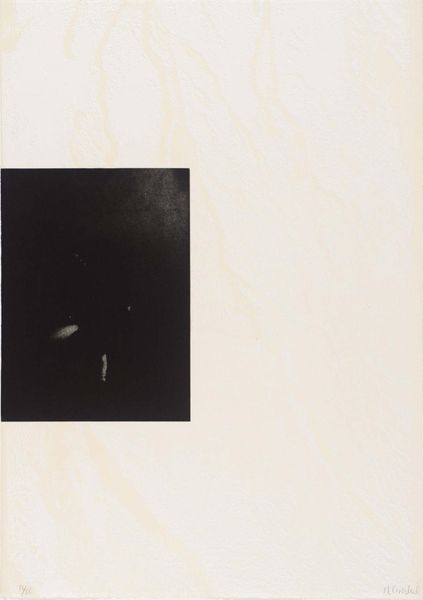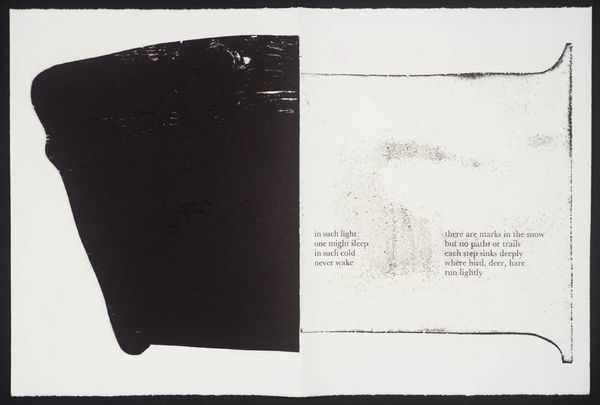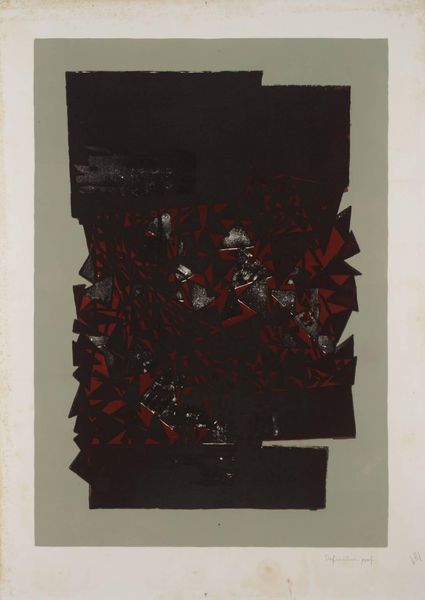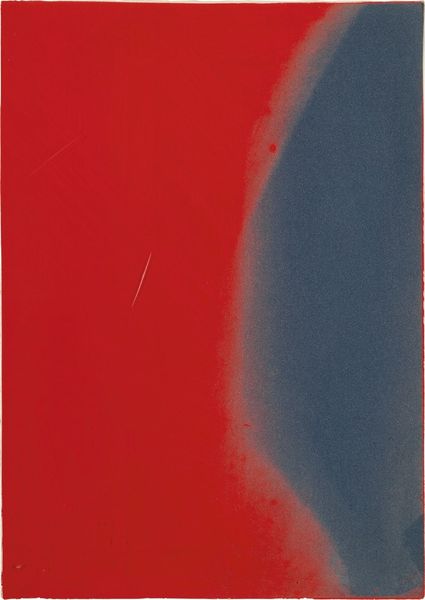
Dimensions: image: 641 x 876 mm
Copyright: © Tate | CC-BY-NC-ND 4.0 DEED, Photo: Tate
Editor: This is Victor Pasmore’s “Interior Image,” and it’s part of the Tate collection. I’m struck by how such simple forms create such a mysterious, almost unsettling atmosphere. What do you see in this piece? Curator: I see a negotiation between the internal and external, the personal and the political, that was brewing in post-war abstraction. How does the artist grapple with representing the self after unimaginable global trauma? This is more than just shapes; it’s about the fraught process of rebuilding identity. Editor: So the abstract form isn't just a formal element, but maybe a representation of fractured identity? Curator: Precisely! Consider the context: Pasmore, like many artists of his time, was grappling with the role of art in a world scarred by conflict. What does it mean to create beauty, or even to represent anything at all, after such destruction? Editor: That’s fascinating. I never thought of abstract art as being so directly tied to social and political issues. Curator: It's a reminder that even the most abstract forms are imbued with the spirit of their time. Editor: I’ll definitely look at abstract art differently from now on. Thanks for opening my eyes.
